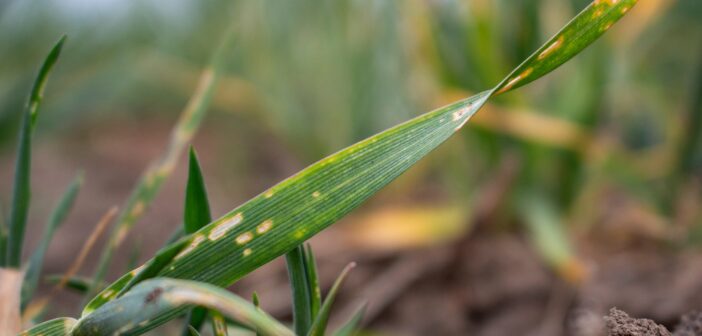Wide variations in drilling dates, the aftereffects of the wet winter on crop growth, and the early appearance of disease are set to make winter wheat disease control challenging this spring.
According to Mike Thornton, head of crop production for agronomy company, ProCam, crops will need managing very much on a field-by-field basis. “Don’t let attention to detail slip with any crop,” he advises. “Just as much effort, if not more, will be needed to protect backward crops as normal ones to ensure further yield potential isn’t eroded.”
To help growers, Mr Thornton offers five key tips:
Remember the importance of early disease management
While it might be tempting to ease back on early fungicide inputs if crop potential has been compromised by delayed drilling or poor winter growth, diseases are already present and a T0 fungicide provides a wider management tool. “Yellow rust is already being found in crops, particularly in the southern half of the country, and it becomes more difficult to control later. Similarly, Septoria is easy to find in early-drilled crops.
“As well as targeting diseases present at application, a T0 fungicide provides a level of insurance in case the follow-up T1 fungicide is delayed. We saw this in 2023; in fields where T0 fungicides were omitted, Septoria exploded once the rains arrived in March.”
Don’t get caught out with spray timings
Accurately timing fungicide sprays to target the correct leaf layer that has emerged is essential for maximum yield protection. But with drilling dates varying widely from September to February this season, and varieties having different speeds of development, crop growth stages will be all over the place, he notes.
“Don’t assume that just because one field has reached the correct growth stage for its T1 spray that its neighbour will also have. Fields will need checking individually – splitting stems to expose the developing leaves and counting back from the ear to identify which leaf layers have emerged.”
Don’t overlook the effects of crop stress
Backward and poorly-rooted plants, whether from later drilling or because they have sat in cold, waterlogged fields over winter, together with leaching of soil nutrients mean crops are likely to be under increased stress this spring. This makes them more vulnerable to infection, he says, particularly yellow rust.
“Use accurate soil testing to identify which nutrients need topping up. But don’t just test for the nutrient levels present in the soil. Use testing which shows the levels actually available to the plant. And consider a phosphite-based treatment such as Incite to encourage rooting.”
Don’t discount diseases not seen for a while
Just because a disease has not been a problem for a few years, do not assume it has gone away. “The root-rotting effects of take-all could be exacerbated this year if second wheat has small roots because it has sat in wet soil. If we have a dry spring and summer, take-all effects are worsened.
“With more crop debris left on field surfaces due to minimum tillage, eyespot can also be hidden a threat, which increases lodging risk. Several varieties chosen for their good Septoria tritici resistance have low eyespot ratings. Make sure you know what your varieties are susceptible to.”
Do keep your eye on the ball
Even varieties with good Septoria resistance, when drilled early, are at risk from the disease, so don’t let variety resistance ratings make you complacent.
Similarly, last year’s hot, dry June brought sudden yellow rust outbreaks in some areas, illustrating how disease pressures can suddenly change. “The lesson is to ensure you have all likely disease threats covered.”




